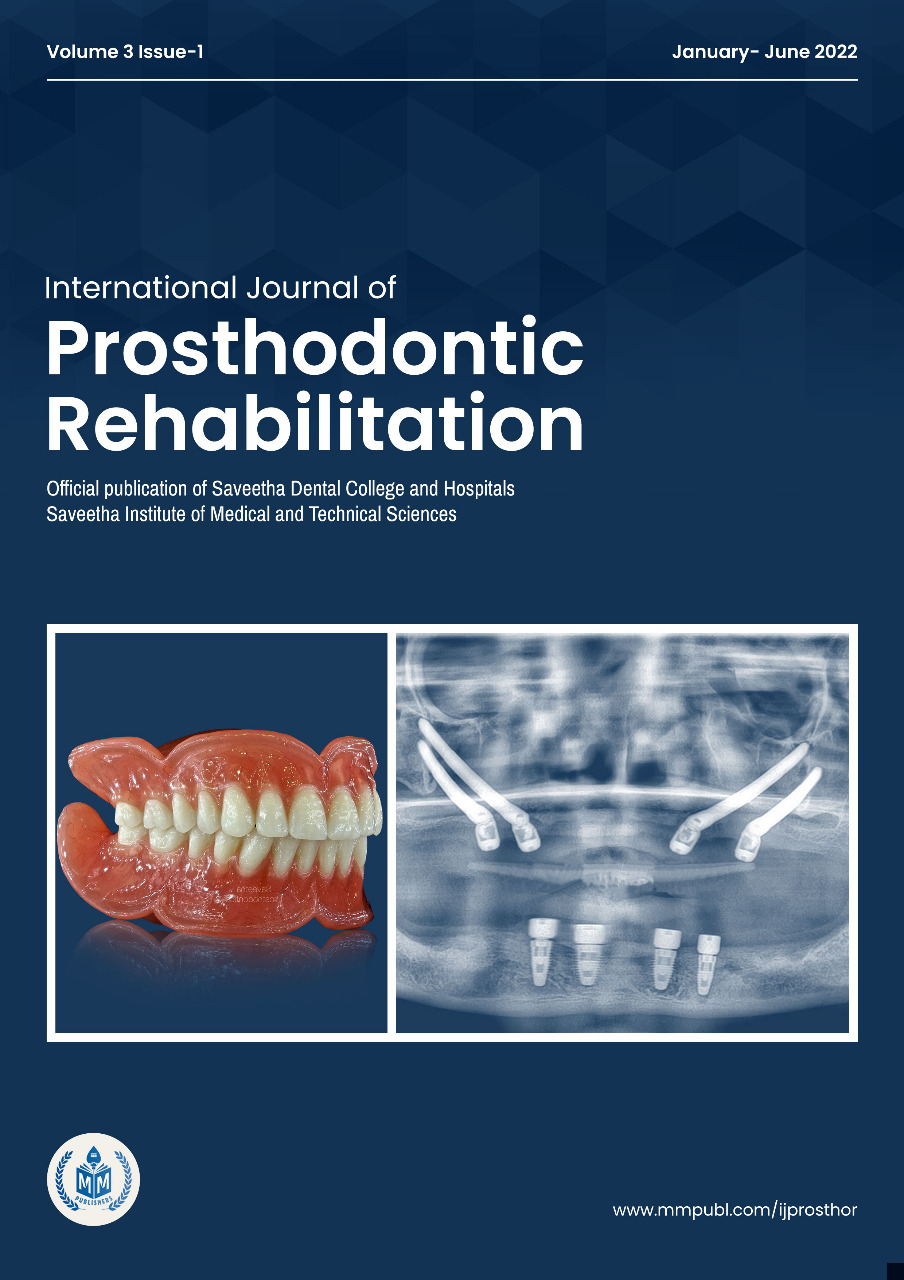THE DISTRIBUTION AND PATTERN OF FOVEA PALATINA IN DENTULOUS SUBJECTS
Original Research
DOI:
https://doi.org/10.56501/intjprosthorehab.v3i1.219Keywords:
Dentulous patients, Fovea Palatina, Palate, LandmarkAbstract
Aim & Objectives:
The purpose of this study was to look at the distribution and pattern of Fovea Palaltina among dentulous people.
Materials & Methods:
A clinical investigation was conducted for the presence and variations of fovea palatina in 300 dentulous subjects ranging in age from 18 to 40 years, with 150 males and 150 female patients. The posterior palatal seal area, the posterior extension of the upper denture, and the vibrating line have all been linked to the Fovea palatina, an important anatomical landmark in edentulous people.
Results:
The findings of this study can be used to compare the location and presence of fovea palatina in dentulous subjects. The square arch form was present in 113 subjects but not in 177. The square tapered arch form was present in 32 subjects but absent in 258. The tapered arch form was present in 105 subjects and absent in 185. The ovoid arch form was present in 33 subjects and absent in 257. Fovea palatine was present bilaterally in 111 subjects and absent in 179. It was present unilaterally in 69 subjects and absent symmetrically in 221 others. It was symmetrical in 29 subjects and non-symmetrical in 261 subjects. It was clinically visible in 142 subjects but not in 148. This was barely visible in 287 subjects and only partially visible in three. The U-shaped palate was present in 251 subjects but not in 39. The V-shaped palate was present in 18 subjects but not in 272. Flat shape palate was present in 25 subjects but not in 265 subjects. In 111 people, fovea palatina was present bilaterally. The fovea palatina was present symmetrically in 29 subjects but was not clearly visible in 142.
Conclusion:
Each individual's distribution pattern and transition from dentulous to edentulous may differ. As a result, both technical and physiological parameters should be considered when determining the location of the PPS area in the maxillary arch using the fovea palatina in both dentulous and edentulous patients

Downloads
Published
How to Cite
Issue
Section
License
Copyright (c) 2022 Anusha Sathiamurthy, Rathika Rai, Emeritus EGR Solomon

This work is licensed under a Creative Commons Attribution-NonCommercial 4.0 International License.
Attribution-NonCommercial 4.0 International (CC BY-NC 4.0)
- Share — copy and redistribute the material in any medium or format
- Adapt — remix, transform, and build upon the material
The licensor cannot revoke these freedoms as long as you follow the license terms.
Under the following terms:
-
Attribution — You must give appropriate credit, provide a link to the license, and indicate if changes were made. You may do so in any reasonable manner, but not in any way that suggests the licensor endorses you or your use.
-
NonCommercial — You may not use the material for commercial purposes.
- No additional restrictions — You may not apply legal terms or technological measures that legally restrict others from doing anything the license permits.
Notices:
- You do not have to comply with the license for elements of the material in the public domain or where your use is permitted by an applicable exception or limitation.
- No warranties are given. The license may not give you all of the permissions necessary for your intended use. For example, other rights such as publicity, privacy, or moral rights may limit how you use the material.

